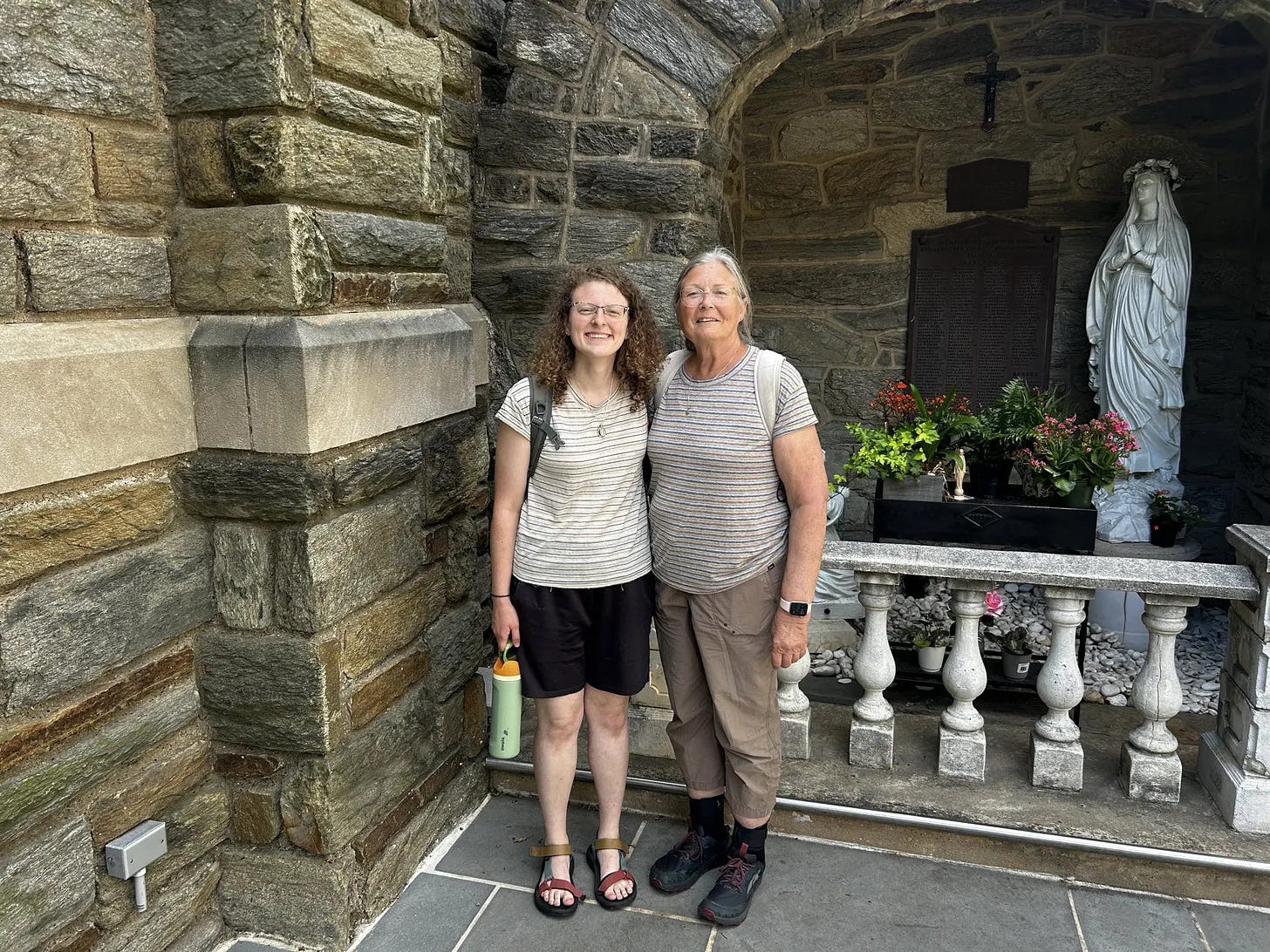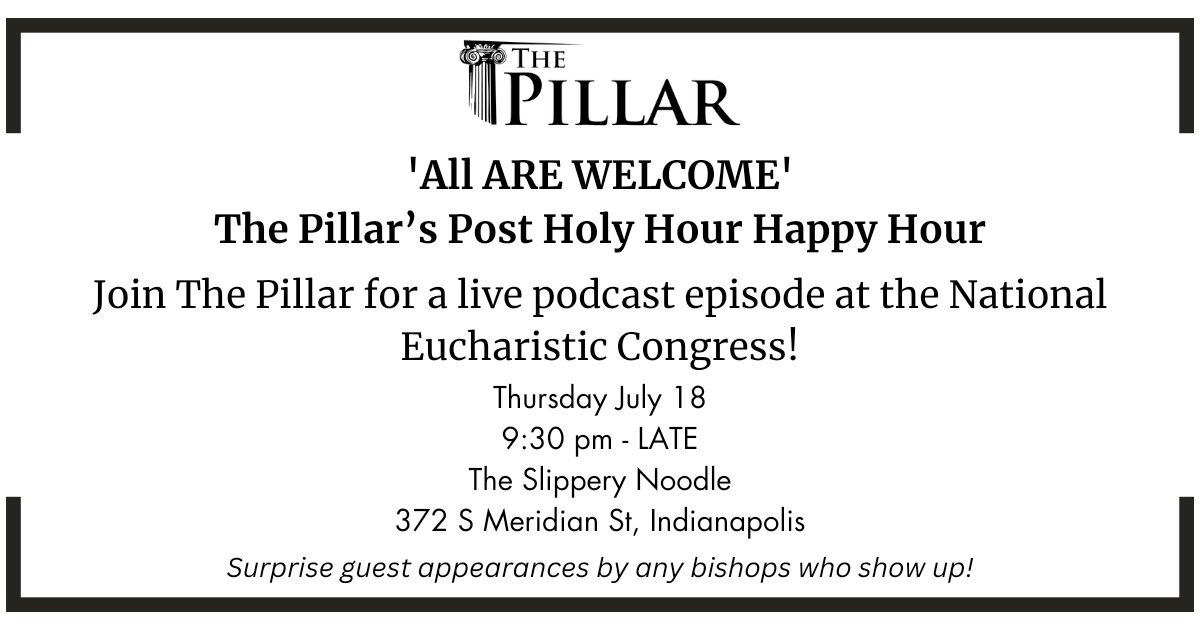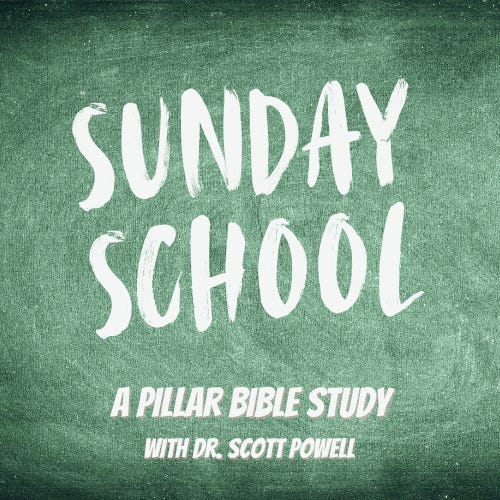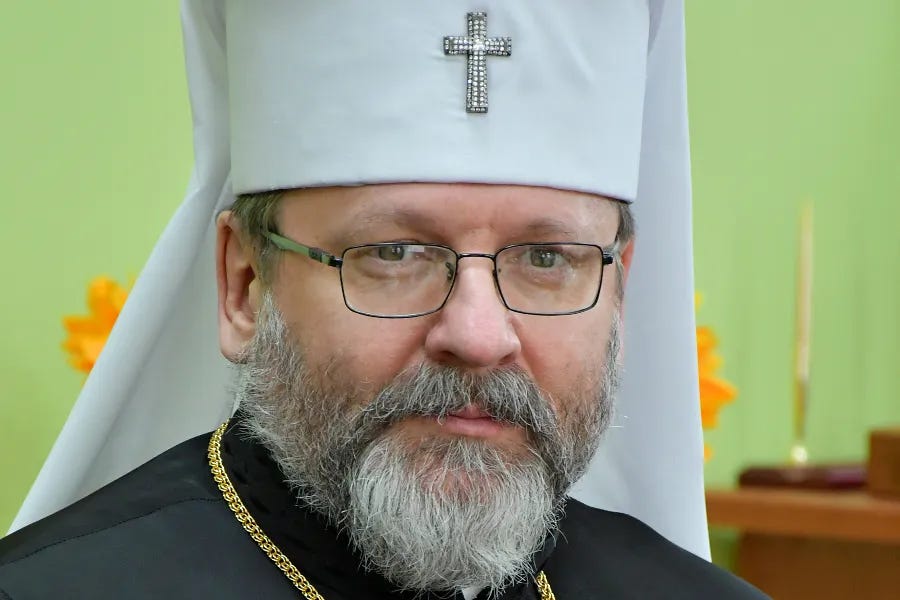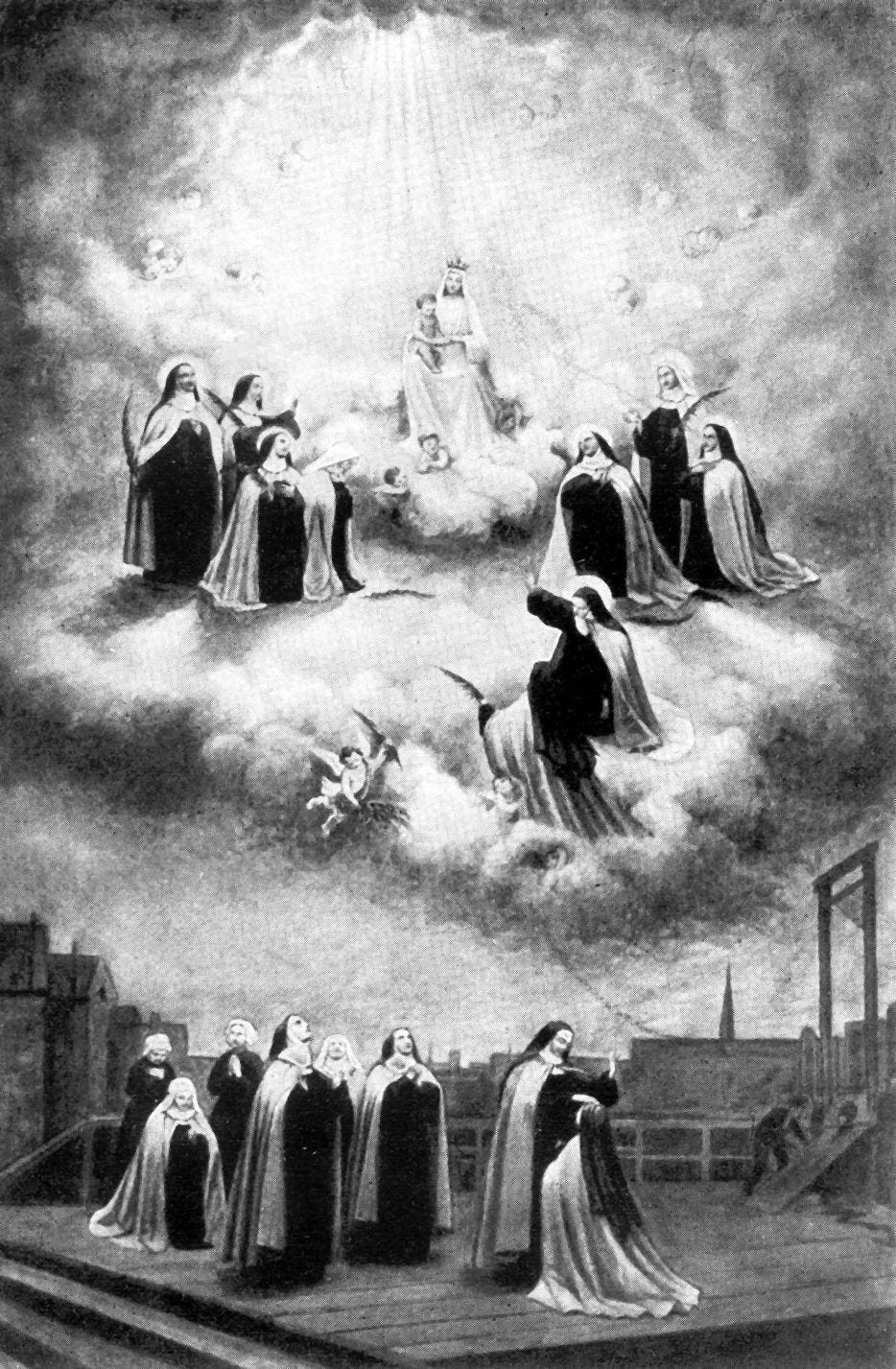Pillar subscribers can listen to this Pillar Post here: The Pillar TL;DR
Hey everybody,
Today is July 2, and you’re reading The Tuesday Pillar Post.
Before 1969, July 2 had been celebrated in the Roman Calendar as the feast of Visitation, which commemorates Mary’s visit to her cousin Elizabeth, and her proclamation of the Magnificat.
But the timing of the feast had always been a bit odd, because — since it was first celebrated by Franciscan in the 1200s, and then added to the universal calendar in 1389 — it was always observed after the birthday of John the Baptist, which had already been celebrated in late June for hundreds of years before the Visitation feast showed up.
Scheduled after John the Baptist’s birthday, the Visitation feast came at what would have been the end of Mary’s visit to Elizabeth, instead of closer to its beginning.
So when Pope St. Paul VI revised the Roman Calendar, the feast of the Visitation was moved to May 31, after the Annunciation, but before the Nativity of John the Baptist — basically, so it would better fit in the narrative of Scripture.
That’s when most Catholics celebrate it these days. For the most part. But there still exist in some parts of the world with customary observations of the Visitation in early July: including in Germany, where Bach’s Visitation cantata is still performed in many places on July 2.
It’s really great, and you should listen to it while you read the rest of this newsletter:
It seems to me the Visitation is about the grace of seeing the presence of God in the world — recognizing the presence of God in other people, as St. John the Baptist did when he lept in the womb, and recognizing how God is using us to his purpose, as did the Blessed Mother in the declaration of her Magnificat.
So today is not the feast of the Visitation, though it once was. But it is a good day, I think, to ask for the grace to better see the presence of Christ in the world, even when he seems at first to be hidden.
The news
It is not new news that the Apostolic See is broke.
And more concerning, Peter’s Pence liquidated millions in real estate in 2022 to help cover the operating shortfalls of the Roman Curia.
That’s right. Peter’s Pence — the project most people believe is focused on helping the poor around the world — is actually selling off about 50 million euros in real estate to cover budget shortfalls at the Vatican.
That is a very bad situation. And as you probably can imagine, it’s not sustainable. You can’t sell off assets to fix operating holes for very long.
“There’s no magic money tree in the Vatican gardens,” a senior official close to the Secretariat for the Economy told The Pillar recently.
That’s true. But there was, a few years ago, a plan for leasing unused Vatican-owned buildings and properties to commercial and industrial tenants and developers. Except the Roman Curia didn’t like that, and now, instead of prepping property for the rental market, at least some of it is getting sold off.
If you’re a diocesan bishop who wants the Congregation for Clergy to work when you pick up the phone, this should concern you. If you’re a canonist who thinks the Signatura should have an operating budget, this should concern you. And if you’re the kind of person who gets worried that the Apostolic See’s financial problems could leave it vulnerable to pressure from places like Beijing, well this should concern you.
Read an excellent analysis of the subject, from Ed Condon, right here.
—
After you read that, read this:
At the end, they released a statement. And as Luke Coppen writes:
“In fewer than 500 painstakingly selected words, the joint statement suggested that the initiative in the five-year battle over the synodal way has shifted — perhaps decisively — in Rome’s favor.”
So what did the document say? Good news. Luke has unpacked each word of its Vaticanese, to tell you exactly what’s happening between the Germans and the Vatican.
This is a very careful analysis. It is also a rollicking good read. You really shouldn’t miss it.
The cardinal urged that departments “be sensitive to and walk in solidarity with those harmed by all forms of abuse.”
But guess what? As of late last week, at least, departments are still using Rupnik art on their websites and in other places.
In light of O’Malley’s letter, that could soon come entirely to an end.
—
Two Ukrainian Catholic priests were released on Friday, more than 18 months after they were arrested by Russian forces in the occupied Ukrainian city of Berdyansk in the region of Zaporizhzhya, south-eastern Ukraine.
Australian priest Fr. Mark Baumgarten has released an album of original songs that deserves a wide audience. It's not "church music", but it is music that people of faith will enjoy. Beautifully written and expertly produced, this album is rewarding listening.
When Burke was indicted, the archdiocese said it would hold off on making decisions about Burke’s money until the case concluded. But now that the case is over, the archdiocese isn’t yet answering questions.
And that’s not all.
Burke and his wife are well-known to a great many Church leaders in Chicagoland. Anne Burke, a retired state supreme court justice, was the first chair of the USCCB’s National Review Board, which oversees child protection policies across the country. Cardinal Blase Cupich has said that the Burkes were some of his first friends in Chicago, and introduced him to a lot of important and influential civic leaders.
And Burke’s campaign war chest has given more than $150,000 to parishes and Catholic schools across the Chicagoland area, $50,000 of that just since he was indicted.
All of that might explain why more than a dozen clerics — including Milwaukee Archbishop Jerome Listecki — wrote to a federal judge during Burke’s sentencing, pleading for leniency.
The pleas worked, with a sentencing judge saying she was influenced to give a light sentence by the letters of support Burke received.
But an expert in ecclesiastical financial problems — retired IRS investigator Rob Warren — told The Pillar that it’s probably not a good idea for Church officials to go to bat for corrupt politicians, especially when they have a conflict of interest, in the form of possibly tainted donations.
Like I said, this is a very Chicago story.
And you can read it right here.
I’m honestly not sure what I think about it — what the archdiocese should do, or whether Church officials should have weighed in. Then again, what I think should happen doesn’t really matter. I really just find this whole thing fascinating. But I am interested in what you think should happen — let me know your thoughts in the comments.
We’d like to introduce you to Jan Pierson and Amanda Newton, two women walking big swaths of the Seton Route pilgrimage traveling across the northeastern U.S.
Both might seem unlikely Eucharistic pilgrims: Pierson is almost 70. Newton is not yet a Catholic.
But both have spent weeks this summer traveling with the Blessed Sacrament, meeting people along the way, and being transformed. And both say that when summer ends, their lives won’t be the same.
Read about how they became friends, and what they’ve learned following Jesus, right here.
—
Finally, the USCCB’s Catholic Campaign for Human Development has been in the news a lot lately, as Pillar readers know, with reports of layoffs at the USCCB dominating Catholic headlines last week.
On Friday, The Pillar broke the news about a memo to bishops from conference executive leadership, aiming to tamp down rumors about those layoffs and explain what happened.
Conference general secretary Fr. Michael Fuller pushed back on the notion, for example, that bishops hadn’t been consulted about the layoffs, saying he had told them that such moves were coming just a week earlier, during their June meeting in Louisville.
And while some reports said more than a dozen people had been laid off, Fuller said the number was actually nine — three from the CCHD staff, four from the USCCB’s Justice and Peace Secretariat, and two administrative positions.
But Fuller didn’t explain the question that had been vexing me about all of this. We knew that CCHD had spent a lot of its reserve cash, creating a problem. But CCHD doesn’t directly fund the USCCB’s justice and peace department, so I really didn’t understand why CCHD financial woes should lead to broader layoffs at the USCCB.
No one else seemed to understand that either.
So The Pillar dug into it.
Eventually, multiple sources close to the conference offered the same explanation: that CCHD had, since 2022, spent down all its reserve cash, and then made commitments to spend even more on grants to outside organizations. The conference was on the hook for those grants, meaning CCHD was pulling other operating dollars out the door. SInce the justice and peace secretariat oversees CCHD, that’s where cuts were made.
You can read about that in our excellent investigative reporting here.
And since we’ve published that, I’ve confirmed that at least some the eliminated positions in the justice and peace secretariat are mostly policy positions, that is to say, they’re occupied by people focused on lobbying for the bishops’ policy agenda on health care, gun control, the environment, racism, and other topics under the mandate of the JPHD committee. So there will be, it seems, less lobbying from the conference on those topics in years to come, which will likely be framed as a refocus on educational initiatives from the department.
And what about CCHD itself?
The USCCB insists that, even with half of CCHD’s positions eliminated, and a greatly diminished financial position, the program will continue to be administered, and continue to serve its mission.
I’m not so sure how long that will last. I find myself wondering if the financial problems at CCHD mean that fewer dioceses will be eager to take up a second collection for CCHD at all. If enough drop the second collection, the program will enter a kind of death spiral.
It is worth noting that the diocese led by the USCCB’s CCHD subcommittee chairman — the Diocese of Harrisburg — does not itself take a CCHD second collection. The diocese instead takes up its own “Matthew 25 collection,” which, according to its website, “replaces the collection for the Catholic Campaign for Human Development.”
The difference is that instead of kicking money up to the USCCB for CCHD, the Harrisburg diocese keeps all the money from the Matthew 25 collection local, and uses it to distribute grant funds to local nonprofits.
Harrisburg isn’t the only diocese to do this. And if CCHD collection money is going to be spent almost entirely on administrative costs at the USCCB level in years to come, it becomes all the more likely that other dioceses will keep the money at home, for diocesan administered anti-poverty programs.
There has been a lot of talk lately about the bishops “killing” CCHD. I don’t think they’ll do that by a formal act, because many of them want to be seen supporting CCHD — as Jayd Henricks notes, questioning the CCHD program is “a sure way to be labeled as inauthentically Catholic.”
But I do think more and more dioceses are going to keep their money at home over the next few years. And that will probably be enough to leave CCHD a program in name only. How long that will take remains to be seen.
—
We’re getting ready to head to Indianapolis later this month for the National Eucharistic Congress — the first of two Eucharistic Congresses which The Pillar plans to cover this year.
If you’re going to be in Indianapolis, you should definitely come hang out with us — especially because we’re throwing a party.
We’ll have a live show extravaganza, July 18, at The Slippery Noodle, just blocks from Lucas Oil Stadium. We’ll have swag, jell-o, and a breakdown of all the Church news unfolding at the Congress.
Plus, it’ll be fun. And there’s no cover charge — though we’ll almost certainly bug you a few times to become a paying subscriber.
Which you should do:
Anywho, thanks for being you.
Please be assured of our prayers, and please pray for us. We need it.
Also, we’ll be closed on Thursday. Don’t light off too many sparklers in a safe:
God bless America.
Sincerely yours in Christ,
JD Flynn
Editor-in-chief
The Pillar


